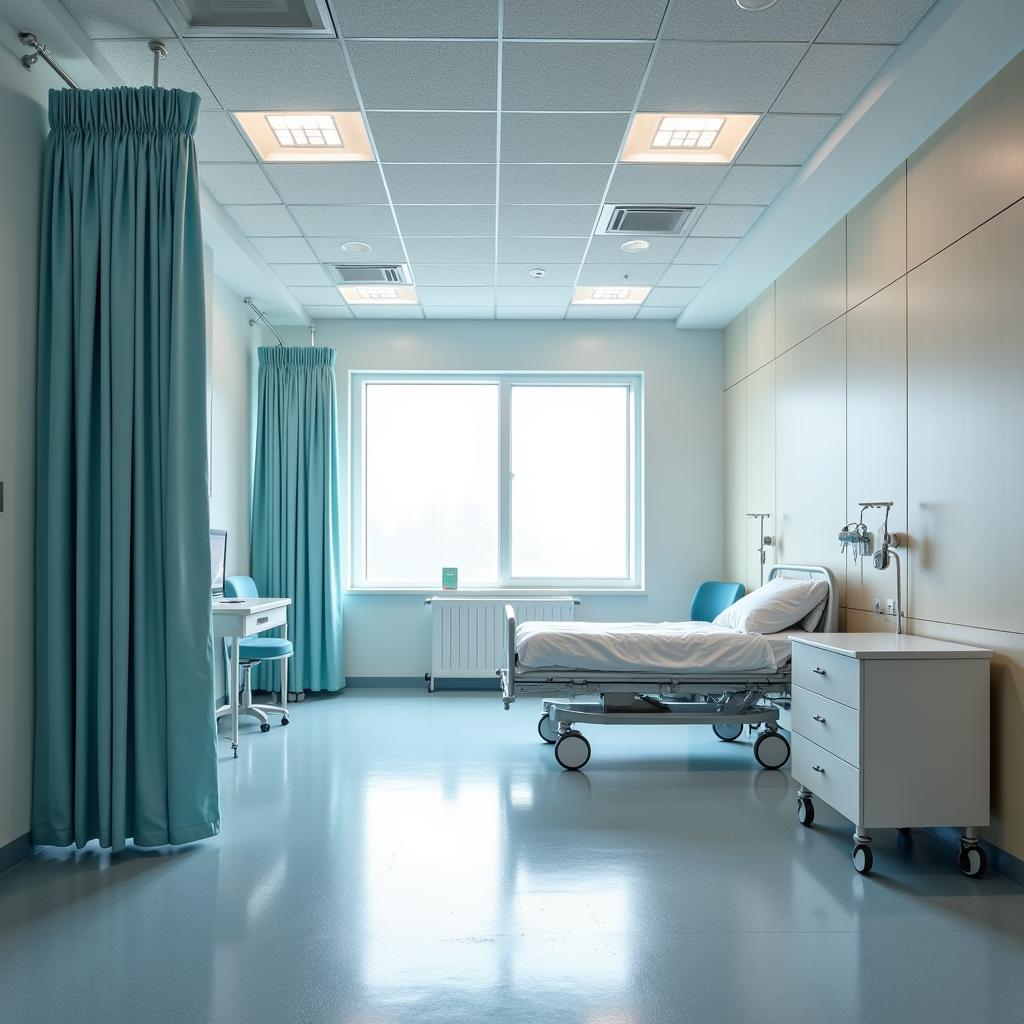The environment of a hospital plays a crucial role in the healing and well-being of patients. Far beyond just medical equipment and sterile surfaces, it encompasses every aspect of the space – from the air quality and lighting to the color palette and noise levels.
The Impact of a Hospital’s Environment on Patient Care
Studies show a strong correlation between a positive hospital environment and improved patient outcomes. These positive impacts include:
- Reduced Stress and Anxiety: Calming colors, natural light, and access to nature views can significantly lower stress hormones, promote relaxation, and aid in pain management.
- Improved Sleep Quality: A quiet environment with controlled lighting and temperature can help regulate patients’ natural sleep-wake cycles, crucial for recovery and overall well-being.
- Enhanced Recovery: A comfortable and supportive environment can positively influence patients’ emotional states, leading to a more positive outlook and potentially speeding up the healing process.
- Reduced Infections: Maintaining optimal air quality, proper ventilation, and strict hygiene protocols are essential in minimizing the risk of hospital-acquired infections.
 Hospital Waiting Area with Natural Light
Hospital Waiting Area with Natural Light
Key Elements of a Healing Hospital Environment
Creating an optimal healing space involves a multi-faceted approach, considering both the physical and psychological needs of patients, staff, and visitors.
1. Air Quality and Ventilation
Maintaining excellent air quality is paramount in a hospital setting. Hospital air purification systems are vital for filtering out airborne pathogens, allergens, and pollutants. Proper ventilation systems ensure a constant flow of fresh air, reducing the risk of infection and creating a healthier environment for everyone.
2. Lighting
Natural light is known for its mood-boosting and therapeutic benefits. Whenever possible, hospital rooms should maximize natural light. Artificial lighting should mimic natural light cycles to support patients’ circadian rhythms.
3. Noise Control
Hospitals can be noisy environments, which can be disruptive to patients’ sleep and recovery. Implementing sound-absorbing materials, establishing quiet zones, and minimizing unnecessary noise are crucial for creating a more peaceful atmosphere.
 Hospital Room Designed for Noise Reduction
Hospital Room Designed for Noise Reduction
4. Color and Aesthetics
Color psychology plays a significant role in healthcare design. Soothing colors like blues and greens evoke feelings of tranquility, while warm tones like yellows and oranges can create a sense of optimism. Artwork, nature scenes, and calming visuals can also contribute to a more positive and welcoming environment.
5. Cleanliness and Hygiene
Maintaining impeccable cleanliness and hygiene standards is non-negotiable in a hospital environment. This includes using hospital-grade disinfectant and rigorous cleaning protocols, especially for high-touch surfaces.
Expert Insight: ” Creating a truly healing environment goes beyond the clinical. It’s about recognizing the profound impact that the surroundings have on a patient’s emotional and physical well-being, ” says Dr. Emily Carter, a leading expert in healthcare design.
6. Nature and Biophilic Design
Incorporating elements of nature, such as indoor plants, green spaces, and even views of nature, has been shown to have a restorative effect on patients. Biophilic design principles can be integrated into hospital architecture and interior design to promote a sense of connection with the natural world.
The Importance of Hospital Housekeeping
A well-trained and dedicated EVS hospital housekeeping team is paramount in maintaining the high level of cleanliness and sanitation required in a healthcare setting. They are on the front lines of infection control, ensuring that patient rooms and all areas of the hospital are thoroughly cleaned and disinfected.
Tools for Effective Hospital Housekeeping
Equipping the housekeeping team with the right tools is essential. Hospital-grade outlets provide the necessary power and safety for medical equipment. High-quality hospital mops are designed for effective cleaning and disinfection, reaching corners and crevices to eliminate germs.
 Hospital Housekeeping Staff Cleaning and Disinfecting Surfaces
Hospital Housekeeping Staff Cleaning and Disinfecting Surfaces
Creating a Patient-Centered Environment
Ultimately, a healing hospital environment is one that prioritizes the needs and well-being of patients. By considering factors like noise reduction, natural light, and comfortable surroundings, hospitals can create spaces that support healing, reduce stress, and contribute to a positive overall experience.
 using WordPress and
using WordPress and